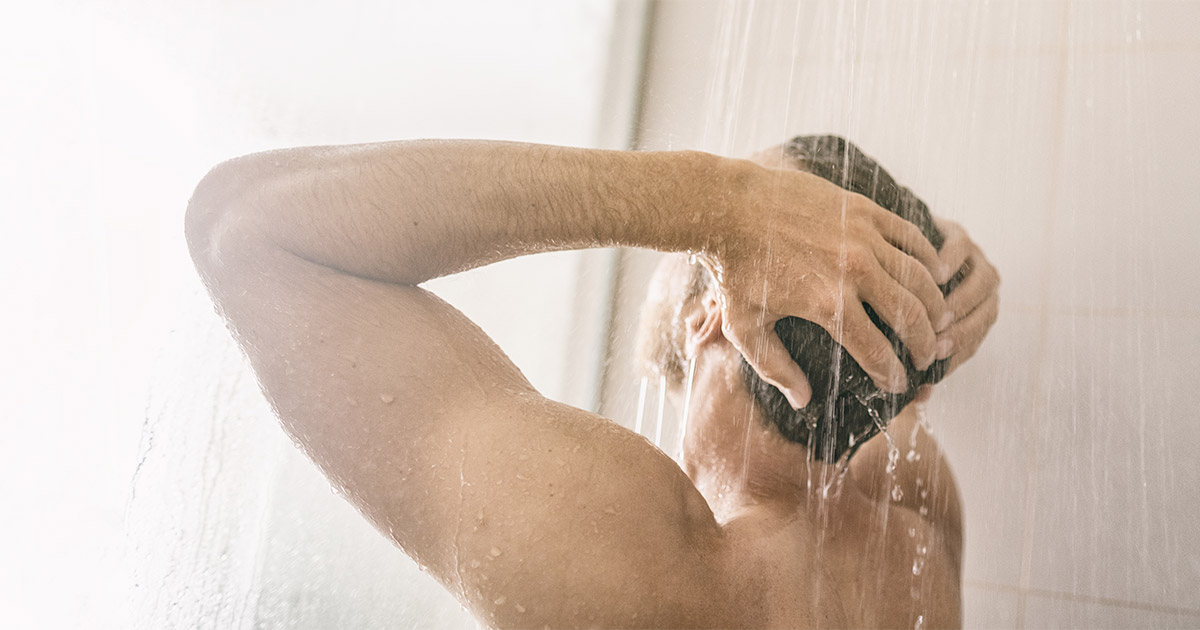If you need an immune boost, want to combat fatigue, kick the caffeine habit, or just feel energized, the contrast shower could be exactly what you are looking for!
What Is a Contrast Shower?
A contrast shower (CS) is alternating hot and cold water in a shower. The hot phase always lasts longer than the cold phase. The contrast shower usually consists of three complete cycles of hot and cold water. With each cycle it is necessary to increase the temperature of the hot water and decrease the temperature of the cold water so that the blood vessels continue to respond. Even with just one cycle of alternating hot and cold shower, the immunity is boosted and sick leave days are reduced .
Benefits:
This tonic hydrotherapy treatment boosts circulation, increases the circulating white blood cells, and may help to prevent muscle soreness after vigorous exercise. The hot water opens up blood vessels. In contrast, cold water constricts them. Thus, a contrast shower acts as a tonic for the circulatory system. Short bursts of cold stimulate the sympathetic nervous system and consequently increase alertness.
The CS (contrast shower) may be useful in terminating a migraine headache if given at the very first signs of the migraine. This treatment is better if done after a massage rather than before a massage.
Cautions & Contraindications:
Individuals who have lymphedema, hepatitis, multiple sclerosis, seizure disorders, atherosclerosis or other blood vessels disorders, advanced kidney disease, seizures, alcohol or drug addiction, neuropathy, or pregnancy should generally not use the CS unless they talk to their health care providers first. Very frequent contrast showers are not recommended for individuals who have hyperthyroidism.
Wait for at least two hours after ingesting medications or drugs, or eating a meal, before doing any hydrotherapy, including this treatment. Fragility and serious fatigue are other contraindications.
Warm and Cool Contrast:
Use the CS with caution in cases of diabetes and morbid obesity. Sedentary individuals may not respond well to the cold. A contrast warm and cool shower works better for those who have anemia, are sedentary, or have hypothyroidism. Adjust temperatures and the length of sprays according to your tolerance.
Equipment Needed:
Here is your checklist for a CS: bath thermometer, bath mat, washcloth to protect eyes, several towels, a bath blanket to wrap the client after the shower, and olive oil. Always have a “waterproof” chair nearby. Be sure a bath mat is in place. Have towels and washcloths available.
Procedure for Contrast Showers:
Begin the shower at 102-104 F. degrees. Raise the temperature to tolerance. Hold the temperature for two to three minutes as the patient tolerates it.
Turn cold water on more fully and then turn the hot water off. If you do not tolerate cold water, cool the hot water down by turning the cold water on more fully while at the same time decreasing the hot water to achieve a tolerable cool temperature. It is much more effective to have the changes abrupt from hot to cold and vice versa. Cold should last 30 seconds.
Reverse again to hot water, making it hotter than the first hot. Hold it there for two to three minutes as the patient tolerates it.
Follow this by a second colder shower. Make it colder than the first. The cold shower should last thirty seconds.
Reverse to the hot water, up to 114 F degrees (or as tolerated), for one to three minutes. The third hot shower spray should be hotter than the second hot shower spray.
Follow by straight cold (or as tolerated) for 30 seconds. Rest for 20 minutes afterwards. Be careful not to chill.
Practical Tips:
When giving the contrast shower to yourself, you can focus the spray where you need it the most: on the face if you have a sinus infection, on the mid back if you are tired, or on sore muscles. Hot water dries the skin. So apply a little cold-pressed olive oil to your skin (except the soles of your feet as it might cause slipping) after a CS.
Disclaimer: The information in this article is helpful and is educational. It is not the author’s or authors’ or Wildwood Health Institute’s intent to substitute the blog article for diagnosis, counseling, or treatment by a qualified health professional.
Work Cited:
Geert A. Buijze. The Effect of Cold Showering on Health and Work: A Randomized Controlled Trial. PLoS One. 2016; 11(9): e0161749. doi: 10.1371/journal.pone.0161749
More F. et al. Manual of Hydrotherapy and Massage. Pacific Press Publishing. Boise, Idaho. 1964.
Sinclair M. Modern Hydrotherapy for the Massage Therapist. Chapter 9. Lippincott, Williams, and Wilkins, 2008. P. 178.

